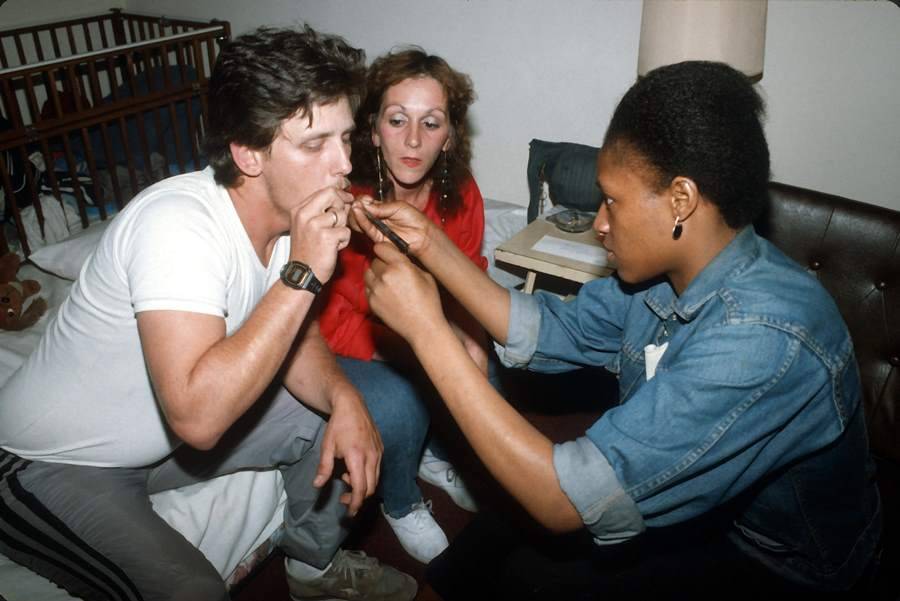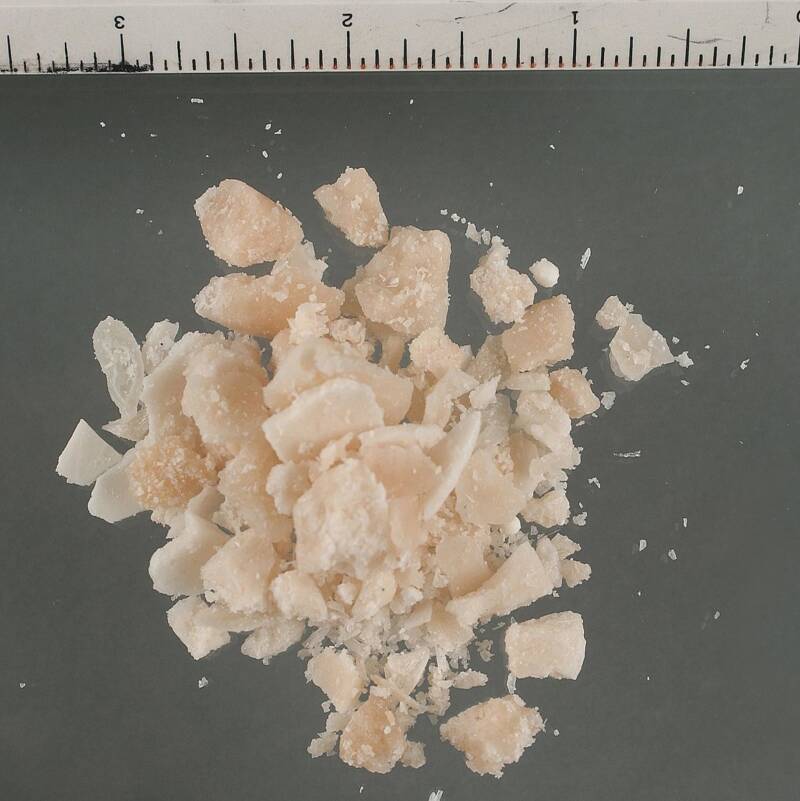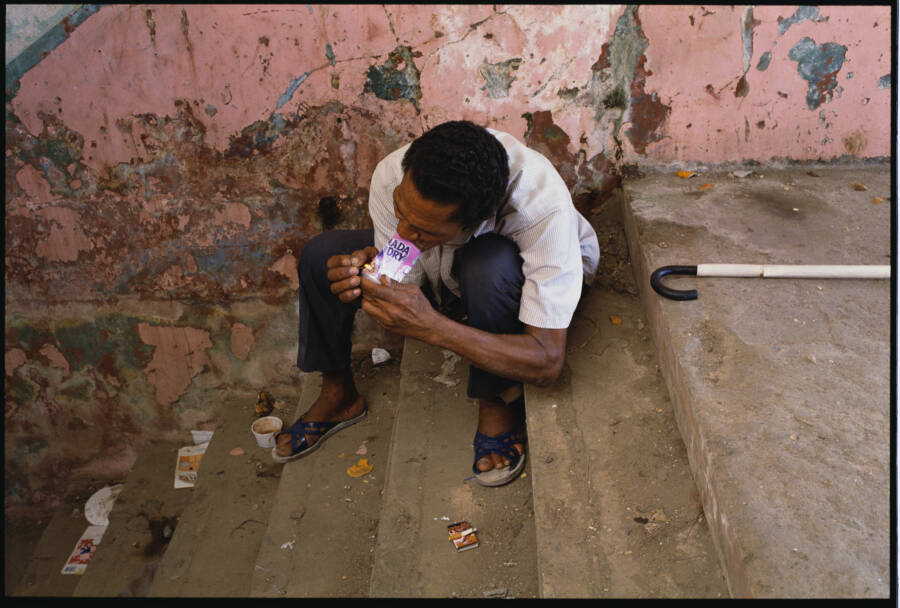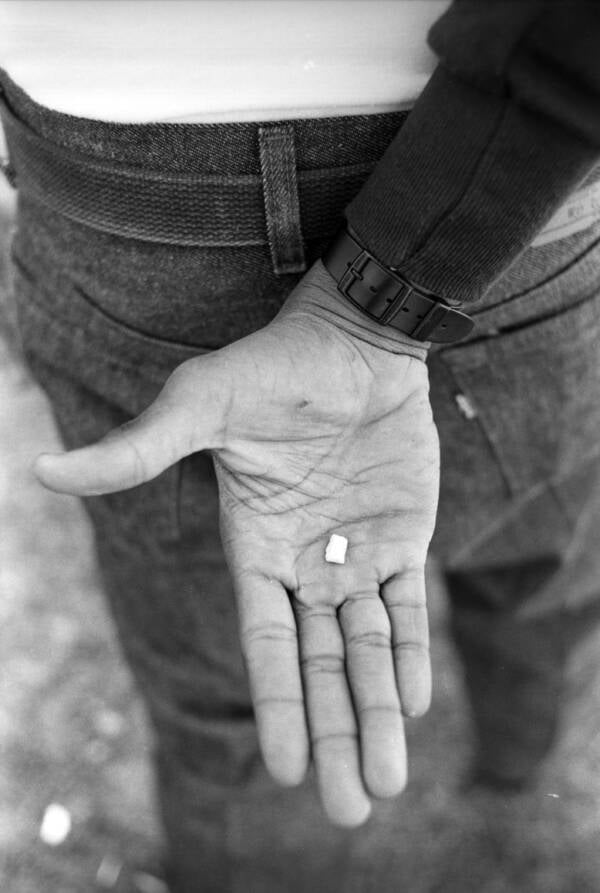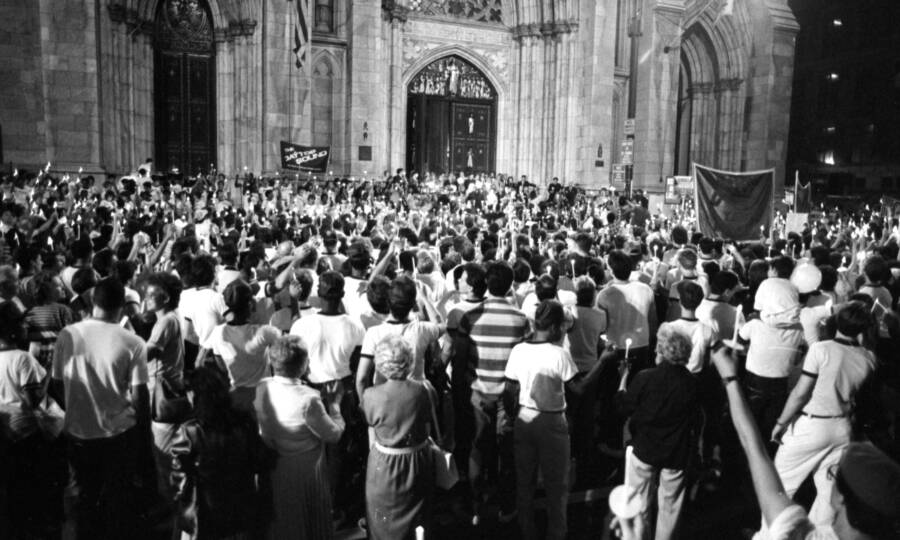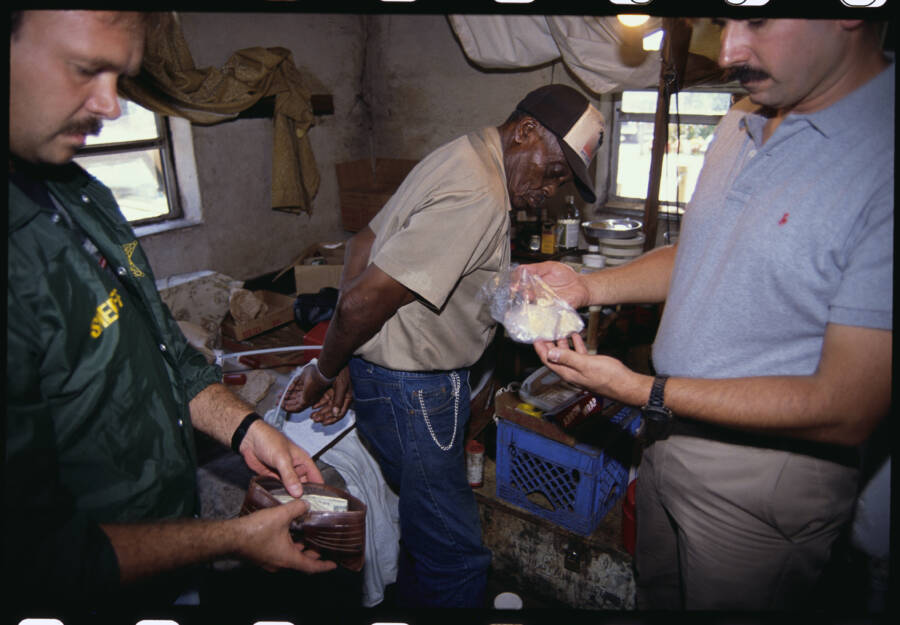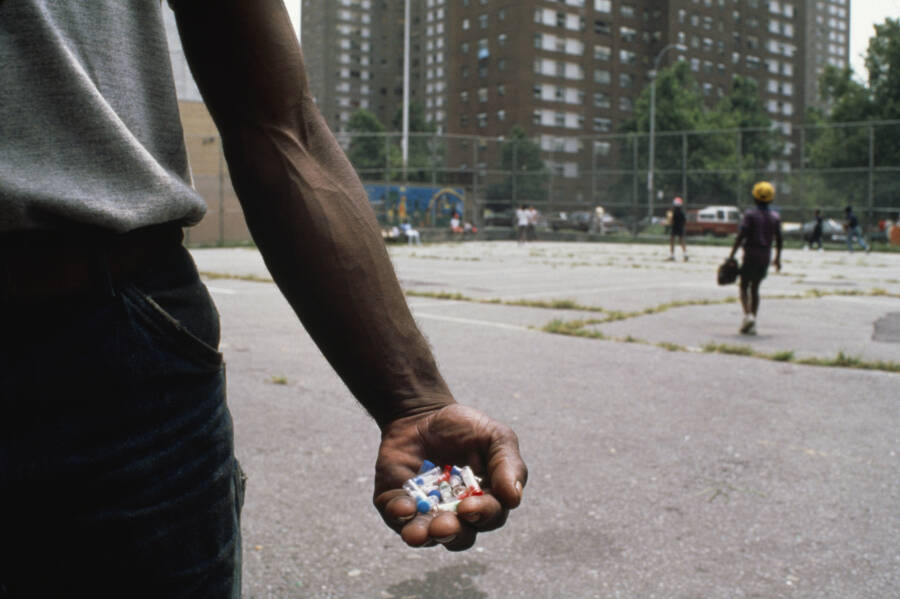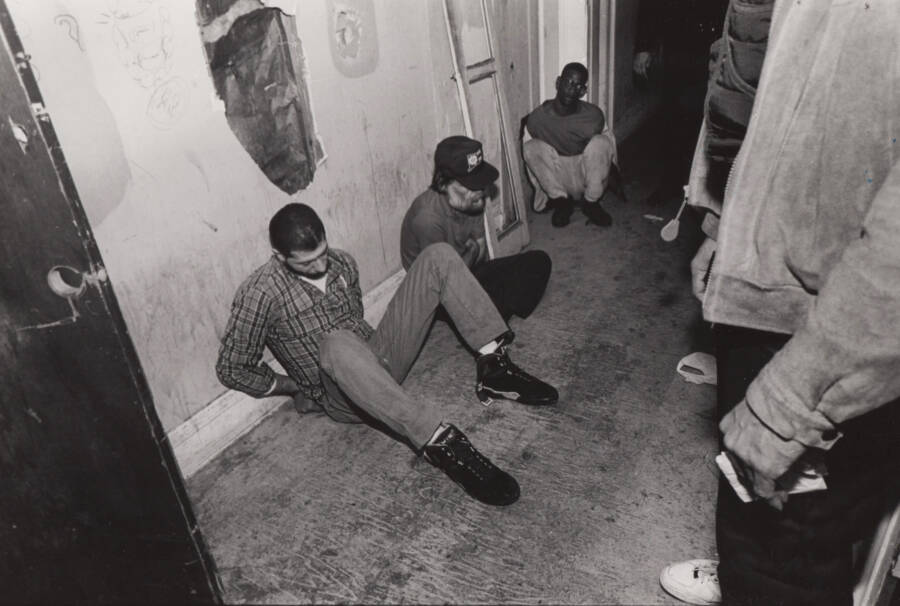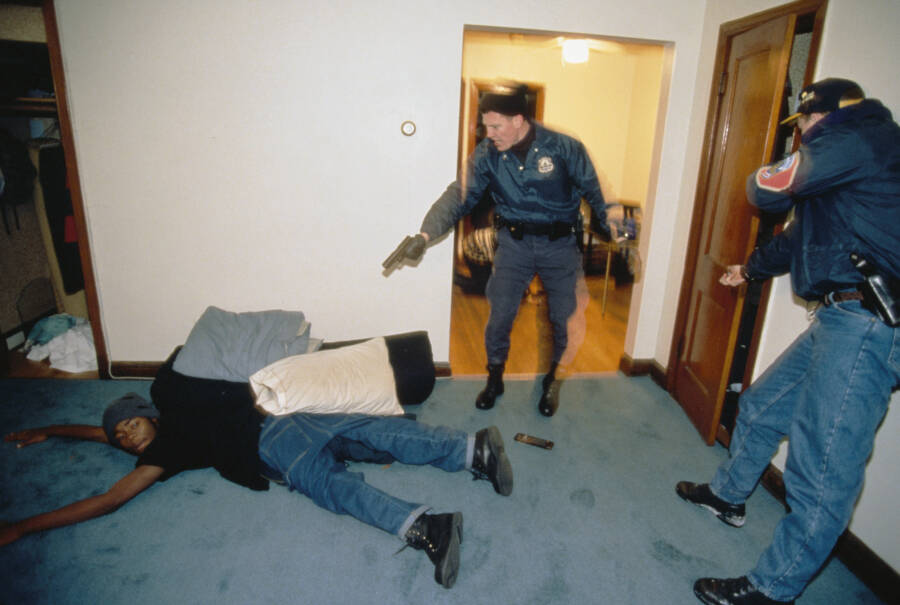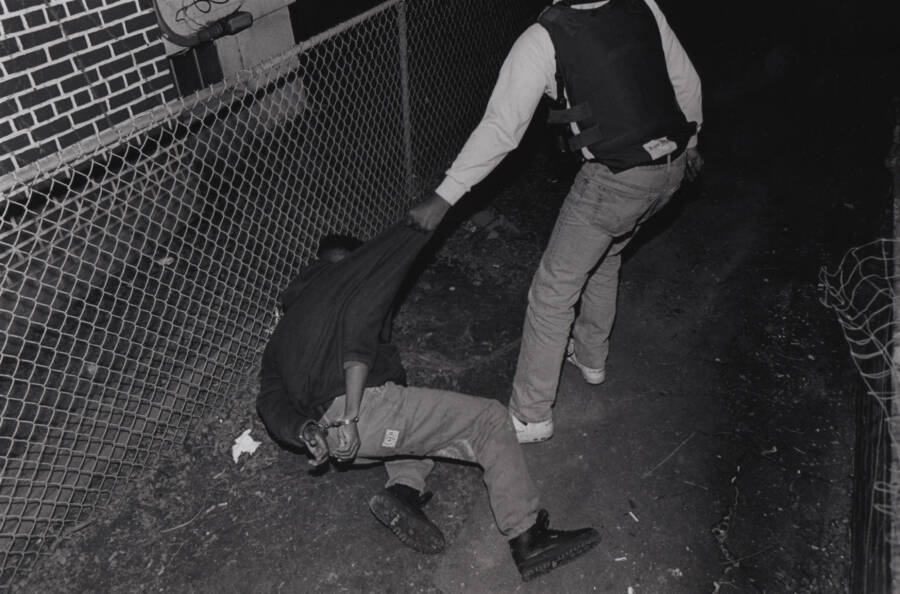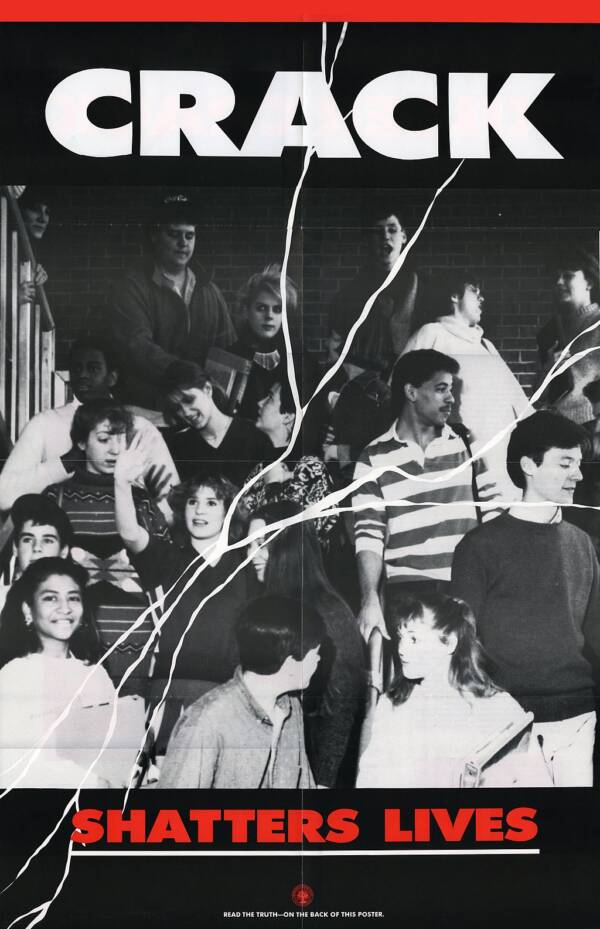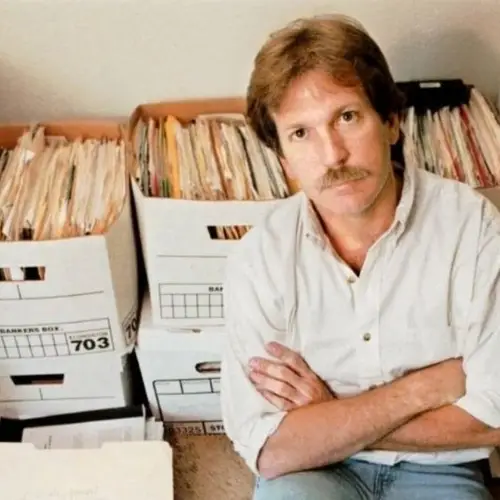In the early 1980s, a rock of crack cocaine went for as little as $5. Due to its cheap price and high purity, it spread like wildfire across the country.
In 1985, the number of Americans who said they regularly used cocaine reached 5.8 million people. At the time, that meant one in every 35 adults was hooked. And crack cocaine — which was made by cooking powder cocaine with baking soda and water — became especially popular.
Not only was crack smokeable, it was also cheap, readily available, and produced an intense high. But the fun didn't last for long. From destroying families to turning neighborhoods into war zones, the crack epidemic completely devastated the United States.
In response, police across the country racked up arrests in the inner cities. And the DEA ramped up drug seizures. By 1988, the DEA had seized 60,000 kilos of cocaine, in comparison to just 200 kilos seized in 1977. Meanwhile, First Lady Nancy Reagan told children to "just say no" to drugs and the D.A.R.E. program tried to stop potential users before they started.
But the ongoing "War on Drugs" failed to stop the crack epidemic in its tracks. So why did crack cocaine seemingly vanish by the late 1990s?
The Birth Of The Crack Epidemic

Wikimedia CommonsA few "rocks" of crack cocaine. Crack gets its name from the crackling noise it makes when it's cooked.
In the early 1980s, most of the cocaine that was shipped to America was thought to come through the Bahamas. At the time, there was an excessively abundant supply of cocaine powder on the islands. Because of this, prices severely dropped, leaving distributors with a devalued product.
In response, dealers turned their powder cocaine into crack cocaine — which was easy to produce and highly profitable. And as early as 1981, the first reports of crack emerged in cities like Los Angeles.
It was later reported that a CIA-backed guerrilla army in Nicaragua had used crack cocaine sales in Los Angeles' Black neighborhoods to fund an attempted coup of Nicaragua's socialist government in the 1980s — and the CIA may have known about it. But this would not emerge until the late 1990s.
In the meantime, the drug grew in popularity — and "conversion laboratories" that specialized in crack cocaine popped up in South Florida. The first crack house was uncovered in Miami in 1982. Surprisingly, crack was not seen as a major threat at first. This was because it was mostly being consumed by middle-class users (who weren't associated with addicts).
But by the end of 1983, crack began to appear in the New York City area — where it would soon become a huge problem. Though most of the early users in the area were middle-class professionals, crack would soon spread to poorer neighborhoods — mostly because of its cheap price.
For as little as $5, residents could buy a rock of crack cocaine. So it's no wonder why crack found a big market in lower-income areas. The purity of crack was also a factor in its popularity. While powder cocaine users might hand over $100 for a gram with 55 percent purity, crack cocaine users could buy their product with 80 percent purity for the same price.
It was tough to describe a "typical" crack user. But many of them were young, according to a GAO report. This report cited a 1986 study that found most juvenile drug users were younger than 13 when they tried crack for the first time. Most of these users preferred crack cocaine to powder cocaine because it was cheaper, easier to hide, and seemed to have a faster high.
But an addictive drug like crack also came with many risks. By 1986, cocaine-related hospital emergencies had risen 110 percent — from 26,300 to 55,200. Between 1984 and 1987, cocaine incidents increased fourfold.
And like many illegal drugs, crack was often associated with crime in several dire reports. In New York City alone, a 1988 study linked crack to 32 percent of all homicides — and 60 percent of drug-related homicides.
The Crackdown On Crack
Though the "War on Drugs" started in the early 1970s with President Nixon and expanded in the early 1980s during the Reagan administration, it was during the late 1980s when the spotlight was shone on crack.
On September 5, 1989, President George H.W. Bush gave his first Oval Office address. During this address, Bush infamously held up a bag of crack.
"This is crack cocaine, seized a few days ago by drug enforcement agents in a park just across the street from the White House," he explained. "It's as innocent looking as candy, but it's turning our cities into battle zones."
The idea that crack dealers had grown so bold that they were selling near the White House fueled public fears about the crack epidemic. Drugs and violence seemed to be taking over American cities — and crack became the central focus of these fears.
Even though the crack baggie in question was later revealed to be part of a setup, Bush successfully pushed for a major investment in the War on Drugs, eventually spending $45 billion. This was more money in four years than the four previous administrations combined.
Most of that money went toward law enforcement. And by that point, sentencing guidelines had already taken a "tough on crime" approach to crack. The Anti-Drug Abuse Act of 1986 established mandatory minimum sentences that penalized crack far more harshly than powder cocaine.
People caught with five grams of crack received a minimum five-year sentence — while people needed 500 grams of powder cocaine to receive that same sentence.
And since crack had become popular in lower-income communities by that point, many people who lived in those areas were punished far more often during drug raids than people who lived in more affluent areas. And Black neighborhoods often bore the brunt.
Reexamining The Crack Epidemic
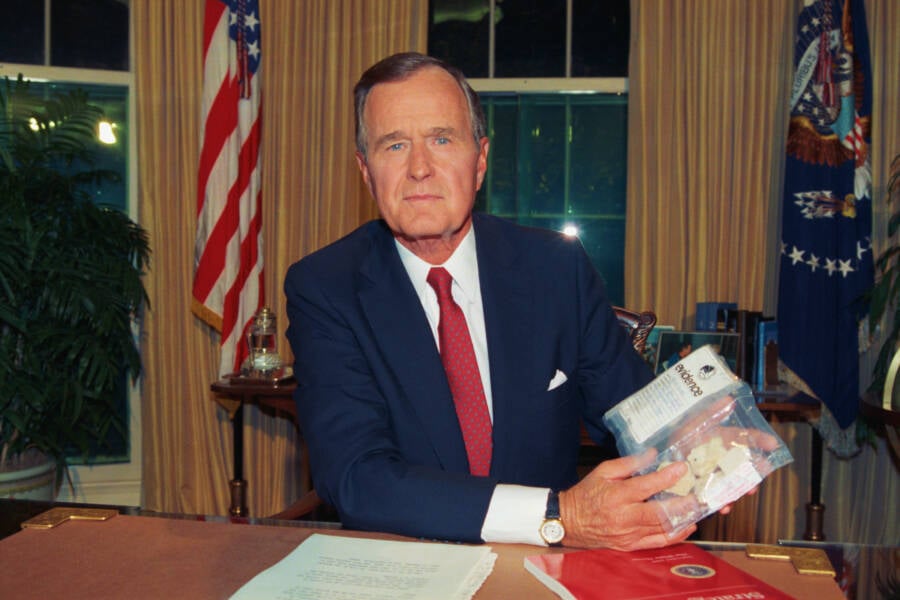
Bettmann/Getty ImagesIn a 1989 press conference, President George H.W. Bush holds up a bag of crack seized by DEA agents in Lafayette Park, across the street from the White House. Bush then announces a $7.9 billion anti-drug program.
The bag of crack held up by President Bush had a controversial history of its own. Dealers weren't selling crack outside the White House — in fact, the drug bust was the first ever crack arrest in Lafayette Park.
It was later revealed that early drafts of Bush's speech had mentioned a crack sale near the White House before it even took place. As it turned out, there was a drug bust set up just for the Oval Office speech.
The dealer was Keith Jackson, an 18-year-old African American student without a prior record. He received a mandatory 10-year sentence for that sale and a couple other incidents related to selling crack. The district judge who handed down the sentence urged the teen to ask Bush for a commutation: "He used you, in the sense of making a big drug speech."
But Bush refused to commute the sentence and Jackson remained behind bars for about eight years. And this was not an isolated incident.
Black crack users often paid a much higher price than whites during the crack epidemic. In 1986, the year Congress passed mandatory minimum sentences for crimes involving crack, the average federal drug sentence for Black Americans was 11 percent higher than for white Americans. Only four years later, that number had soared to 49 percent.
And even though a 1994 survey showed that far more white people were using crack, Black people were more likely to be punished for crack offenses. From 1991 to 2016, African Americans were sent to federal prison about seven times more often for crack offenses than whites.
Among drug offenders with little or no prior record, Black people were sent to federal prison 40 months longer on average than white people.
The impact continued long after the crack epidemic faded. In 2006, Black Americans reportedly made up 15 percent of regular drug users in the United States and 74 percent of those sentenced to prison for drugs.
How The Crack Epidemic Ended
Despite the investment in the War on Drugs, it did not end the crack epidemic. A 1997 survey found that only 5 percent of recovered crack users said they stopped because of being arrested or going to jail. Meanwhile, about 19 percent reported they simply "grew tired of the drug life."
Brooklyn native Thomas Covington, who was arrested more than 30 times, agreed with that sentiment: "I don't think anything the police did changed my behavior. Sometimes it was a little more challenging to buy. But once that compulsion is there, it doesn't matter what the penalty or the threat is."
The National Institute of Justice reached the same conclusion. The arrests and mandatory sentences "appeared to have no major deterrent effect." So instead of addressing the social, political, and economic issues that brought crack into certain neighborhoods in the first place, the "tough on crime" policy mostly just increased the prison population.
Consider the end of the crack epidemic in New York. In the 1990s, while NYPD officers were racking up nearly 900,000 drug arrests, crack use was already declining. It was also declining in Washington, D.C., where the police presence and drug arrests decreased — and where the city's own mayor was actually caught using crack.
So why did the crack epidemic stop? Many experts believe it was the crack users themselves who made the drug seem undesirable — especially since they were so addicted. "You don't find much crack use among the young," said Jean L. Scott, an employee at a drug rehabilitation center in 1999. "These people saw a whole generation go bad on crack."
Harlem resident Selena Jones, who grew up with a mother who was addicted to crack, agreed. "I remember being 10 years old, and having to take control of my own life," said Jones. "We were eating cornmeal pancakes without syrup for dinner — crack vials all over the floor."
After reading about the crack epidemic, find out why cocaine was once prescribed by doctors as a miracle cure. Then, learn about the opioid crisis sweeping the country today.
